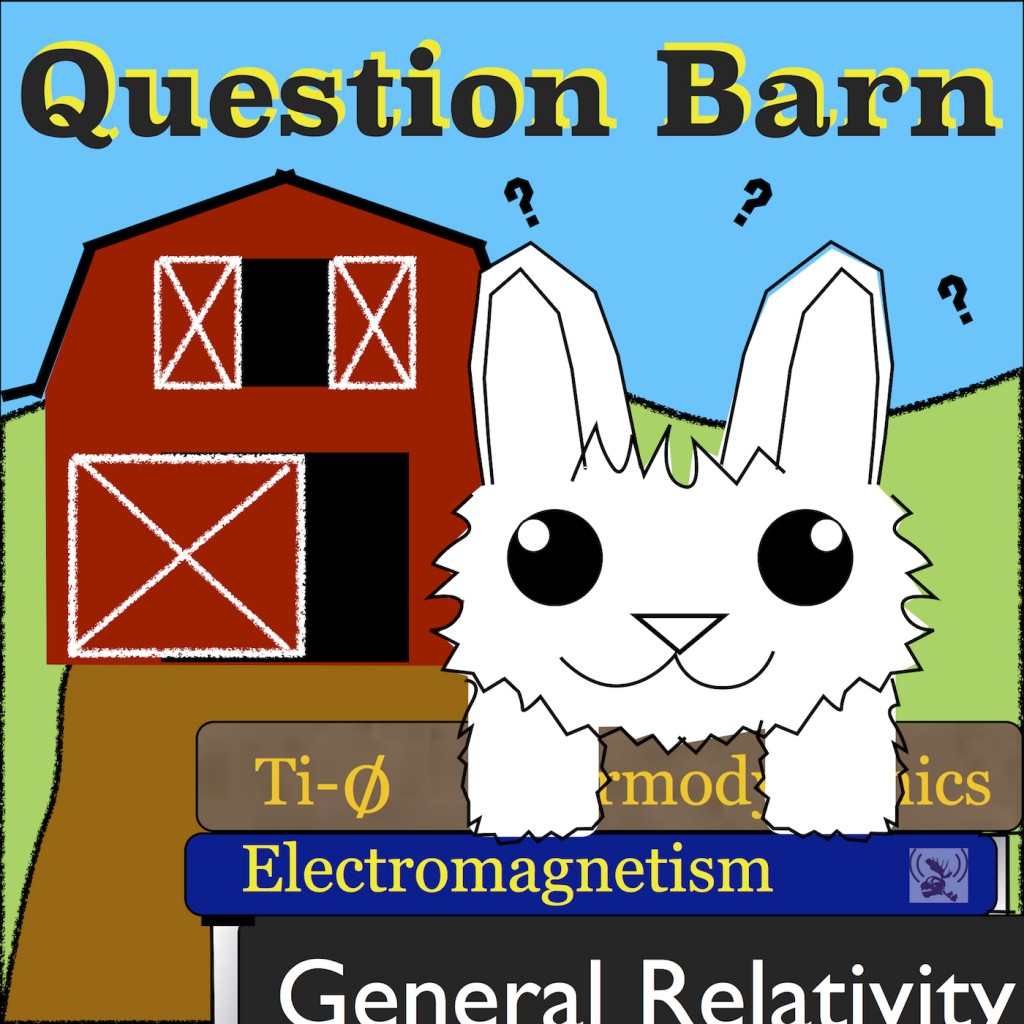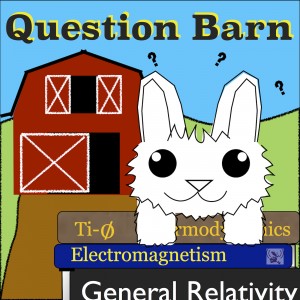a brand new fun question!
sorry i’ve had trouble publishing lately. super busy and had trouble getting everywhere in the same place.
but question barn!
f
*EDIT*
hey, i just received a correspondence from Nirav Mehta, who commented:
Hi!
I just listened to question barn 8, and thought I’d add my 2 cents here… First, let me say that you an Ken were completely correct to be suspicious of your conclusions in that episode. It was not very satisfying for good reason, and your intuition was steering you in the right direction.
It all has to do with the fact that the mass of the pi-meson is much lower than the mass of the Higgs. The (neutral) pi-meson has a mass of about 135 MeV, while the Higgs weighs in at a whopping 125 GeV. When you consider the fact that a nucleon is about 1 GeV, it begins to make sense. The pi-meson is responsible for the long-range attractive nature of the nucleon-nucleon interaction, and other heavier mesons such as the rho (mass 770 MeV) could play a role in the short-range repulsion.
The Higgs is nearly as massive as a Tellurium atom, and its range should be about 3 orders of magnitude shorter than the range of the pion if we think of it in the Yukawa sense as resulting in a exp(-m*r)/r kind of force.
I am still very interested in Ramiro’s question, as I know very little about the Higgs. From your conversation, I see no reason why the Higgs can not be the force carrier for some “force”, at lest in the modern sense that forces are a result of some broken symmetry in the Lagrangian. I liked your discussion about how the Higgs particle is a real, honest-to-goodness excitation of the Higgs field, like the photon is an excitation of the EM field, and that the Higgs observed at the LHC was not a virtual particle, how could it be?!



